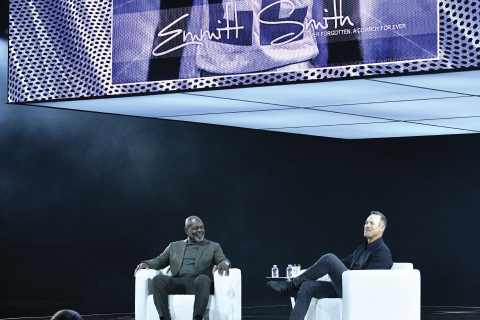SEMA News—February 2015
The Los Angeles Auto Show
EVENTS
By John Stewart
The Los Angeles Auto Show has developed a reputation as a “green” show that strongly focuses on alternative fuels and novel forms of propulsion. This may have been the case in prior years, but the 2014 Los Angeles Auto Show had more to offer enthusiasts than in recent years, as a burst of “track-ready” performance cars and creative variants on existing platforms came to light. That made it more like the SEMA Show—an optimistic environment in which OEM exhibitors launched fun-to-drive new models and showed off interesting concept cars that may very well enter production. Among them were several vehicles that could be of special relevance to SEMA members.
 |
The Chevrolet Colorado ZR2 concept rides on 18-in. bead-lock-style aluminum wheels and is 4 in. wider than the Colorado Z71. The pickup is powered by a 2.8L Duramax diesel that produces 181 hp and 369 lb.-ft. of torque and is mated to a six-speed transmission. The spare tire is mounted in the bed, along with a Hi-Lift jack, and both differentials have electronic lockers. The Colorado ZR2 may or may not be offered in showrooms soon, but the 2.8 turbodiesel powerplant is expected to become available in 2016. |
 |
This is an advance look at the Scion iM Hatchback concept, thought to be very close to what will arrive in dealerships in 2015. (The actual production version is scheduled to be revealed at the New York Auto Show in April.) The Scion iM hatchback concept rests atop 19-in. forged alloy wheels and features geometric grille inserts, sport suspension, a full body kit, deep air intakes and fog lights. |
 |
Another “track-ready daily driver” car, the new Ford Shelby GT350 Mustang is equipped with a 5.2L V8 engine that will crank out more than 500 hp and more than 400 lb.-ft. of torque. It rides on 19-in. aluminum-alloy wheels. Performance upgrades include MagneRide dampers, aggressive brakes and finely tuned aerodynamics. Rumor has it that pricing will start in the low $50,000 range and move up with optional packages. |
 |
A beautiful exercise in glass and metal, the Infiniti Q80 Inspiration Concept is a stunner from every angle. The concept car features lots of intriguing ideas, including a new hybrid powerplant that pairs a twin-turbo 3.0L V6 engine to an electric motor, making a combined 550 hp. Infiniti spokespeople say that the car is an indication of where they would like to take the brand in the future. |
 |
The Lexus LF-C2 2+2 roadster concept features small vents in the side sills that direct air to the rear brakes and out the fin-like rear diffusers. The rear end is highlighted by L-shaped taillight bulbs and an exhaust system with chrome-covered quad exhaust tips. Lexus calls the car a “design study that explores key styling themes” and, as such, is an illustration of the company’s intention to put more emotion into its designs. |
Toyota Mirai Runs on Hydrogen
| |||
Toyota has become the first manufacturer to build a production car ready for sale that is powered by a fuel cell. In November, Toyota announced the name of the car, Mirai, which means “the future” in Japanese.
At a recent event tied in with the Los Angeles Auto Show, Toyota allowed automotive journalists and business reporters to drive the car, which in simplest terms might be described as a hybrid Camry with a better battery.
That “better battery” would be a hydrogen fuel cell, which offers numerous advantages over actual battery packs. Hydrogen fuel cells can be refueled in three to five minutes instead of hours for a battery pack, and they weigh less. The hydrogen is held in two heavily reinforced high-pressure storage tanks at about 10,000 psi and provides enough fuel to enable about a 300-mile range. These components offer packaging advantages that result in a low center of gravity and sporty cornering capacity.
Toyota’s advance presentation included experts who suggested that the car represented a turning point in clean transportation and addressed questions about what it would be like to live with a hydrogen car. To the assembled audience, the company’s assertions that hydrogen will become a big player in the future seemed generally credible.
Intriguingly, the Mirai will be available with an optional power-takeoff feature, which would allow the fuel cell stack to function as a stationary power generator in an emergency situation.
|
The powertrain is rated at 153 hp with 247 lb.-ft. of torque. Unlike the Prius, the Mirai is a four-seat sedan with a trunk instead of a hatch, so direct comparisons are inappropriate, but the Mirai is clearly a more relaxing car to drive, with better interior appointments, more dynamic handling and lower NVH.
It also will be priced differently—somewhere around $57,500; leasable for $499. After federal and state rebates and tax credits, the bottom line will be somewhere under $50,000.
The Mirai goes on sale in Japan by the end of 2014 and in selected regional North American markets in the second half of 2015. How fuel-cell technology will affect enthusiasts and car collectors remains to be seen, but we can imagine the day when hydrogen cars will make a presence on the SEMA Show floor.








